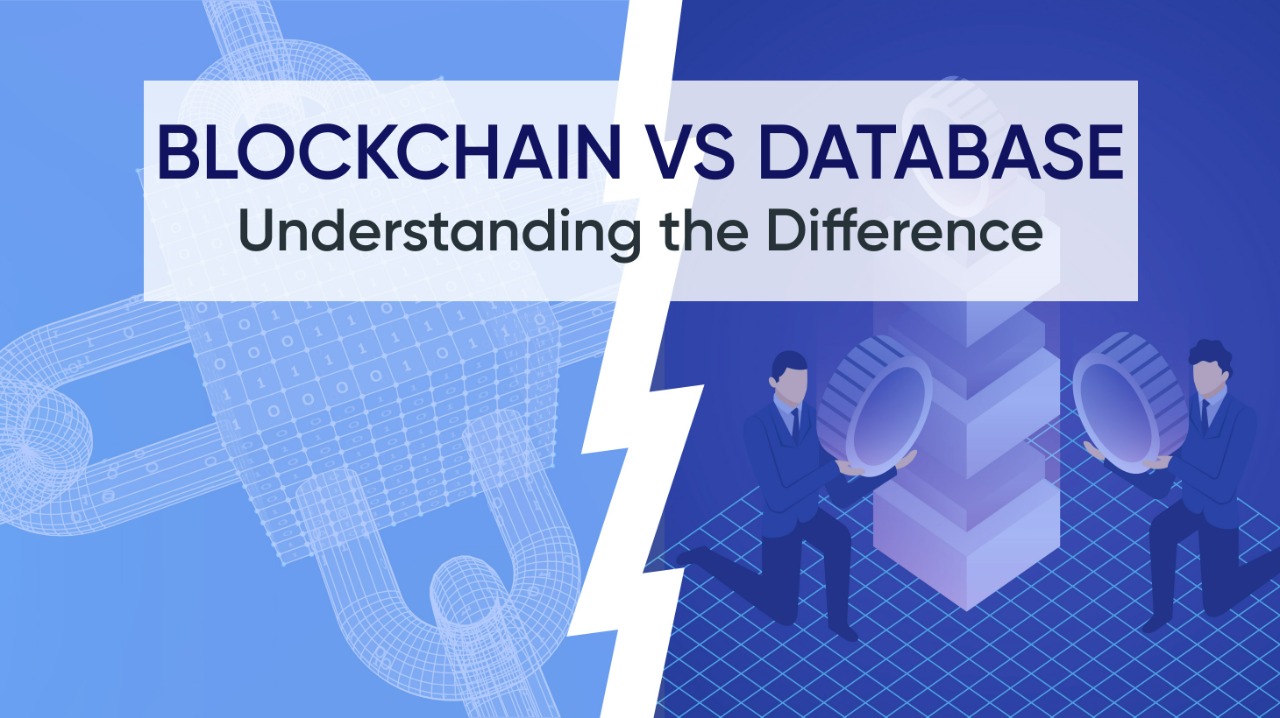For businesses, the ability to adopt new technological trends rapidly and the desire to implement spectacular, outside-the-box solutions can be stressful. Will that, however, protect such businesses from rivals? The answer is no, of course!
But what deters firms from implementing new technology is their lack of knowledge, their organizational structure, and how it can affect their bottom line. Determining whether to use new blockchain technology or stick with conventional database management systems is one such conundrum.
So, in this post on blockchain vs. database, we'll give you the lowdown on both technologies, explain how they can be used, and go over some of their potential applications.
What Is Blockchain?
A group of users can collaborate to build a uniform decentralized network using blockchain, a Distributed Ledger Technology (DLT). With the use of the consensus algorithm, these users can communicate with one another to exchange information or data. The Blockchain does not have a central controlling body to ensure the integrity of the entire network.
Blockchain is not simply a random piece of technology; it is the next stage of the tech revolution, which is finding new uses every day. Due to its many significant characteristics, blockchain is one of the burgeoning technologies that is making inroads into a variety of industries. It is also one of the most promising technologies that have the potential to alter the world.
What Is A Traditional Database?
Some of those special features, along with standard read and write features, are disabled in the traditional database because it is a centralized ledger managed by an administrator. The parties with the necessary access can read and write in a typical database.
An administrator known as a DB Admin, who has total authority over the database, can change, administer, and govern a traditional database. The database administrator can control the size of the database to more manageable levels and optimize database performance, among other tasks. As a large database can become slow, administrators typically use optimization techniques to increase performance.
Blockchain Vs. Databases: The Difference
Let's move on to how they vary now that we have defined and discussed what a blockchain and a database are. The main variations between the two technologies are listed below.
1. Control
The most significant distinction between a blockchain and a database is this. Users cannot download traditional databases since they are physically centralized on a single server.
The designated authority continues to have control over the database, and before allowing access to it, it confirms the client's identification documents.
Therefore, one person or a small group of people has the authority to operate and manage the database.
The Blockchain, in contrast, is intended to function with input from every network user. To put it another way, peers within the system can communicate with one another without needing the oversight or consent of a central administrator.
The majority of the nodes must agree before any data can be added to a block. This consensus ensures the network's security and makes it challenging to interfere with.
2. Architecture
The architecture that each utilizes is another important distinction in the blockchain vs. database debate. A typical database, for instance, has a client/server architecture, which has so far proven to be appropriate for both small and large-scale enterprises.
In this approach, the server functions as a producer, and the clients act as users or consumers. Thus, a server, which serves as a centralized processing unit, can be used by clients to request and receive services.
On the other hand, blockchain employs a distributed ledger technological architecture. Accordingly, it functions as a peer-to-peer network where each peer can interact with another utilizing safe cryptographic protocols.
Each peer holds a copy of the original chain, acting as a sort of server (referred to as a node) for the network that verifies the transaction block. Each node has the option of carrying out one or both mining tasks.
3. Permissions
Permissions are what drive databases. The 'users' who are permitted to communicate with the database can be specified by the database administrator. Clients attempting to access the database must meet the administrator's definition of the ideal user.
As a result, a database is made to limit the number of users who may access it by requiring certain requirements before a user can access or add any data to the database.
Since there are no restrictions dictating who the ideal user is, blockchain can simply be referred to as a permissionless network.
Everybody has access to the Blockchain and can read the data there whenever they want. Despite the fact that there are various kinds of Blockchain, each one's set of rules governs who is permitted to view and edit information.
In general, network users have rapid access to the Blockchain anytime they need it.
4. Append-only by design
Databases are made to support the addition, modification, and deletion of data. With a Blockchain, it doesn't work that way, though. Data added to a block cannot be changed after it has been added, altered, or removed from the chain.
There is a historical record of everything that has been saved on the data because the information is added to the complete chain in this way. In other words, a single operation on a blockchain is inserted, and anything that is put into it becomes immutable and open to everyone.
5. Security
Since the data kept in a database is not secure, this is a significant disadvantage of databases. Hackers may exploit a single gap in the structure, gaining unauthorized access to critical information and undermining the enterprise's operations, unless the entire setup is standardized and properly supervised.
When comparing blockchain to databases, the former comes out on top since it is much more secure. Blockchain functions independently of a central server by giving each node a copy of the chain to use as a reference for validating blocks. The technology will recognize the irregularity and immediately fix any incorrect information when there is consistency from a node.
Consider this example to show how Blockchain excels in the security department when compared to databases. The network will readjust itself based on the copy of the chain with every other node if a peer on the network decides to go rogue and start manipulating data on the network.
It takes at least 51% of the nodes for a rogue peer to interfere with the network, which is nearly inconceivable given the enormous amount of computational power needed to pull it off.
6. Fault tolerance
The fault tolerance of the two technologies is another significant distinction. Operations can quickly become disrupted if a database administrator is not present. Similar to when a server fails, corporate operations could stop altogether.
As its uptime is dependent on thousands of nodes around the world rather than a small number of servers, blockchain is a remarkably fault-resilient technology. The network will still function properly even if a few hundred nodes are turned off.
Blockchain can be thought of as a type of database because it can store data, however, it would be incorrect to compare it to a conventional database. The distinctions between a Blockchain and a database are extremely obvious, and because of these differences, they can be used for a variety of purposes.
In practice, it doesn't matter which technology wins the Blockchain vs. Database battle, but rather how applicable it is to your objectives. Before choosing between a Blockchain and a conventional database, it is essential for every business to know what it wants.
A Blockchain development company can help you figure out the needs of your company. Therefore, investing in a good Blockchain development company is a very crucial investment.

















Post Comments